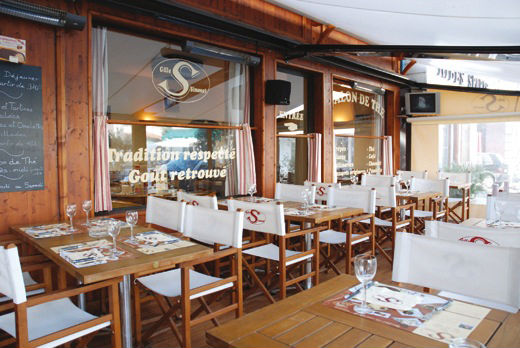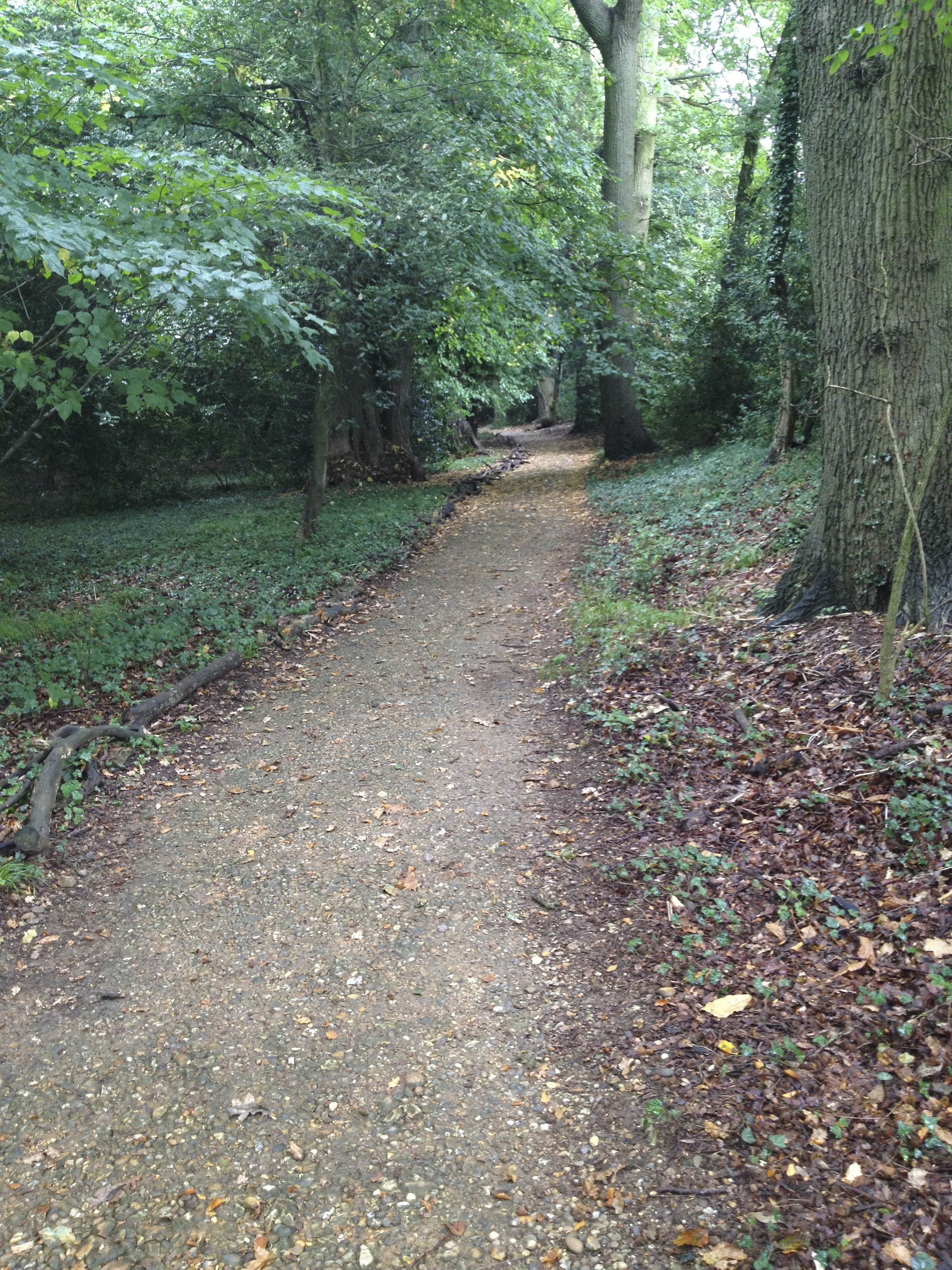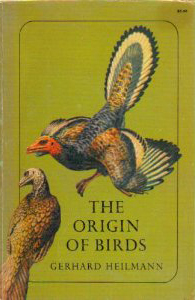Probably my most memorable feast reflecting the title of this post is an ornithological lunch I had with Tim Birkhead at Restaurant Gilles-Simonet in St Girons in the French Pyrenées a few years ago. I had a superb Magret du Canard (the bird) with salad (the leaves) while Tim had the Tartine Pigonneau (pigeon sandwich) and salad [1]. Like so many feasts with ornithologists this one was memorable not only for the food but also for the engaging conversation about birds and ornithology. Over the years, Tim and I have shared dozens, if not hundreds of meals, where the conversation turned to birds and both our enthusiasm and exchange of ideas was fuelled the superb quality of the food and wine.

I started thinking about ornithological meals on reading Jerry Coyne’s blog post last week about people he would have liked to have dined with. Over the years I have had the opportunity to talk birds over a fine meal, and usually one-on-one, with an alphabet soup of excellent ornithologists including: Malte Andersson*[2], Jim Briskie*, Eberhard Curio, Nick Davies, John Eadie*, Peter Feinsinger, Peter and Rosemary Grant*, Geoff Hill*, Simone Immler, Ian Jones*, Ellen Ketterson, Bruce Lyon*, Anders Møller*, Ryan Norris*, Ken Otter, Rick Prum, Jim Quinn, Laurene Ratcliffe*, Jamie Smith*, Niko Tinbergen, Al Uy, Sandra Vehrencamp, Pat Weatherhead*, Stephen Yezerinac*, Amotz Zahavi*[3]. I can honestly say that every one of those meals involved a rewarding conversation about birds, with fresh ideas, insights and stories. And what a great way to spend a couple of hours. As Bernd Brunner points out in his recent book, Birdmania, people who study birds are largely fanatics, sometimes crazy, and for the most part likely likely to be delightful dinner companions.
But Coyne’s post was a variation on that old radio show theme about people from the past you would like to dine with, and where and when, to talk about evolution. He limited his readers to three choices and many, of course, chose Darwin. And Darwin would be my first choice, too, to talk about birds. Here’s why, plus my other two choices for an ornithological repast, and since I will be arriving unexpectedly from the future, I will bring the food and wine:

Charles Darwin: I’d like to dine with him in his garden at Down House, then stroll around his ‘sandwalk’ while we talk about pigeons. I have long felt that his work on pigeons provided the key insights into his views on natural and sexual selection, and I would like to see if he agrees. In fact, an early reader of Darwin’s Origin of Species manuscript, Whitwell Elwrin, wrote to Darwin’s publisher, John Murray, to say that the manuscript was “a wild & foolish piece of imagination” and that he should instead write about pigeons: “Everybody is interested in pigeons,” he said, and a book about them would “be reviewed in every journal in the kingdom and soon be on every table.” With the notable exceptions of Charles Otis Whitman and BF Skinner, the pigeon, and Darwin’s insights about them, have been largely neglected by ornithologists, until recently when Michael Shapiro at the University of Utah took up the cause and has already published some amazing work.
I‘d like to meet Darwin for lunch in 1856 and tell him that it was high time he published his big book. Fortunately, Alfred Russel Wallace wrote him that now famous letter in 1858 or we might never have benefitted from his genius. REPAST: tourtière made with breast of wood pigeon rather than the traditional (at least in Québec) Passenger Pigeon [4], with a chilled bottle of Birichino Malvasia Bianca from the Monterey Bay area. He will probably be surprised to learn that we now thoroughly understand genetics, that we wiped out the Passenger Pigeon, that California makes great wines, and that he is still number one on most biologists’ lists of people they’d like to have met.

Margaret Morse Nice: I’d like to have lunch with her in her kitchen at West Patterson Avenue in Columbus, Ohio, in 1932. I’d like to talk to her about her sparrows, in part because I worked on them with Jamie Smith for a couple of winters on Mandarte Island and found them totally engaging. Nice’s two volume monograph is more than 600 pages long, and she published almost 200 papers. How did she do it? Did she feel that being a ‘housewife’ helped or hindered her scientific pursuits? Did she feel excluded from the companies of men who dominated ornithology in those days? REPAST: omelette of quail eggs and black trumpet mushrooms with Malivoire Chardonnay from Ontario. She will probably be surprised to learn that the Song Sparrow has become a model organism for ornithologists with superb work by Jamie Smith, Peter Arcese and Jane Reid, for example, that women are now well represented in ornithology, that her work is now seen as pioneering, and that there are respectable wines from Ontario.
 Gerhard Heilmann: Heilmann is not well known among ornithologists today, but I was intrigued by his talents, knowledge and insights when writing about him in our Ten Thousand Birds book. Heilmann was Danish, born in 1859, and spent his life mainly as an artist but had an abiding interest in birds and dinosaurs. His book The Origin of Birds is an ornithological classic. I would like to have dinner with him in 1916 at his house on the shore Nakebölle Fjord on Denmark’s northeast coast. There he built an aviary out over the water so he could study ducks and gulls, and a large one on land for studying raptors. There’s really nothing like visiting and chatting with someone who keeps wild birds. REPAST: magret du canard (grilled, rare) with a bottle of Gérard Bertrand 2008 Le Viala Red from the Languedoc-Roussillon region of France. He will probably be surprised to learn that we now have solid proof that birds evolved directly in one lineage of dinosaurs, that some dinosaurs outside that lineage had feathers, and (sadly) that his work has largely been forgotten.
Gerhard Heilmann: Heilmann is not well known among ornithologists today, but I was intrigued by his talents, knowledge and insights when writing about him in our Ten Thousand Birds book. Heilmann was Danish, born in 1859, and spent his life mainly as an artist but had an abiding interest in birds and dinosaurs. His book The Origin of Birds is an ornithological classic. I would like to have dinner with him in 1916 at his house on the shore Nakebölle Fjord on Denmark’s northeast coast. There he built an aviary out over the water so he could study ducks and gulls, and a large one on land for studying raptors. There’s really nothing like visiting and chatting with someone who keeps wild birds. REPAST: magret du canard (grilled, rare) with a bottle of Gérard Bertrand 2008 Le Viala Red from the Languedoc-Roussillon region of France. He will probably be surprised to learn that we now have solid proof that birds evolved directly in one lineage of dinosaurs, that some dinosaurs outside that lineage had feathers, and (sadly) that his work has largely been forgotten.
And the following were all on my shortlist: David Lack (brilliant, perceptive), Richard Meinertzhagen (crazy, psychopath), Elliot Coues (insightful, productive), Francis Willughby (pioneering, innovative), and Rollo Beck (passionate about birds, adventurer).
You can’t, of course, meet and dine with any of those people but the annual banquet at the AOU (now AOS) conference is a great way to meet people and talk birds. I have probably been to 50 conference banquets over the years, and the food at almost all of them was terrible and overpriced. But the AOU banquets are thankfully often a notable exception—I fondly remember the fabulous banquet in the Field Museum at the 100th AOU conference in 1982, and last year’s AOS banquet in East Lansing was outstanding, even though they ran out of meat before I got to the head of that line. I don’t want to put any pressure for this year’s AOS conference organizers but I would highly recommend going to the banquet this year in Tucson. At the very least, the setting will be spectacular and you will reap tremendous rewards if you dine with at least one ornithologist who you do not already know. Then go birding before you head home. Eat, bird, and leave.
SOURCES
- Brunner B (2017) Birdmania: A Remarkable Passion for Birds. Vancouver: Greystone Books.
- Heilmann G (1926) The Origin of Birds. London: H. F. & G. Witherby.
-
Nice MM (1941) The role of territory in bird life. American Midland Naturalist 26:441–473.
-
Nice MM (1937) Studies in the life history of the song sparrow, pt 1. A population study of the Song Sparrow. Transactions of the Linnaean Society of New York 4:1–246. [Available here]
-
Nice MM (1943) Studies in the life history of the song sparrow, pt 2. Transactions of the Linnaean Society of New York 6:1–328.
-
Shufeldt RW (1916) Present work of Gerhard Heilmann. Auk 33:457–458.
FOOTNOTES
1. I am reasonably sure that those were not the names of those dishes on the menu, but close enough
2. People with whom I have shared many ornithological meals get a star.
3. OK, this is seriously embarrassing. As soon as I had written this list, I noticed that there were only 5 women and 21 men. Should I go back and balance the sex ratio, or would that be even more biased? Honestly, those were just the first people who came to mind as I worked through the alphabet. I could have just as easily mentioned any of the following and more: Colleen Barber*, Theodora Block*, Fran Bonier*, Nancy Burley, Camille Bonneaud*, Colleen Cassady St Clair*, Carla Cicero, Anne Clark, Roslyn Dakin*, Stéphanie Doucet*, Ricky Dunn*, Emily Duval, Philina English*, Rebecca Kimball, Adeline Loyau*, Sue McRae*, Pat Monaghan, Julie Morand-Ferron, Sue Hannon, Karen Holder*, Kathy Martin*, Beth MacDougall-Shackleton*, Gail Patricelli, Marion Petrie, Melanie Rathburn*, Alex Rose, Kristen Ruegg, Becca Safran*, Allison Schulz, Bridget Stutchbury, Cara Thow*. The interesting thing if you are to compare those two lists is that the average age of the men is probably 20-30 years more than that of the women. This reflects a very welcome trend in ornithology where women now have a strong presence, influence and voice, and are doing some amazing research—such a sea change from the days when Margaret Morse Nice was studying birds from her houses in Columbus, Ohio and Norman, Oklahoma.
4. I often wondered if tourtiére was derived from the French Canadian word for the Passenger Pigeon (tourte) but several sources suggest that that’s a myth. Tourte is, in fact, an Old French (8th-14th century) word for meat pie, derived from the Latin torta, long before Europeans first encountered the bird. Maybe the bird was named after the pie and not the other way around?
PHOTOS: Simonet from their Facebook page; I took the picture of Darwin’s Sandwalk; Nice’s house from http://www.sailorthomson.com/003.html ; Heilmann’s book cover is in the public domain
No, it would not be more biased to go back and fix the list to have more women. We are all biased and our first thoughts are even more so. I all the time think of a list and then go back and figure out who my biases have left out. I don’t think it is the real me that leaves them out, but the superficial brain, washed over with societies biases. You easily thought of women when you tried. Put them in and help others not perpetuate the bias. But at least you did mention it. Next time show us your gracious side first. And by the way, add some women to the mythical dining list. One is not enough. Enjoying reading these pieces. See you in Tucson (yes, Dave and I are coming!)